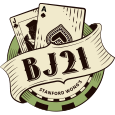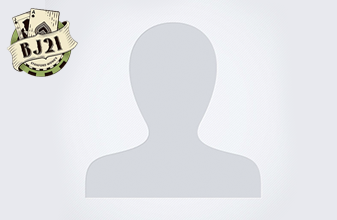In a thread below about memory expert and blackjack player Dominic O'Brien, Midwest Mogul raises an interesting point: if you have a perfect card memory that is not enough, you have to make use of it somehow.
I have met O'Brien only briefly and I have only a vague idea of what methods he actually uses, but it is interesting to speculate on how such a player might obtain an advantage.
New players often imagine that fantastic gains can be achieved by the use of multiple side-counts. This is mistaken. Use of five side-counts may increase your overall win rate by 10 or 20% (which is well worth having) but nothing too spectacular considering the effort employed. In the British game where O'Brien made his name side-counts the gains are even less spectacular due to the restricted playing options.
It is possible that O'Brien may use some advanced betting system to achieve a greater gain from betting than the user of any commercial system. He might for example use the 3-dimensional system Griffin suggests in Theory Of Blackjack where exact gain from the blackjack bonus is calculated independently of other effects of removal. Use of such a system would yield greater gains than a system with a perfect (100%) betting correlation. I say possible because this would require a degree of theoretical understanding-and such an ability is not always possessed by memory or blackjack experts.
In his book How To Develop A Perfect Memory O'Brien explains enough of his approach to determine that he uses both what we know as shuffle-tracking and sequencing. Indeed for a memory expert who remembers the order of every single card at will the distinction maybe non-existent. If you ever look at the pre-shuffle card order of a given pack (for example, with Dennis Sugg's "Shuffle Trak" software) and play through the subsequent shuffled pack you will appreciate this point.
Staples of shuffle-tracking such as mapping become irrelevant: you would just know instinctively where the cards where and adjusting your map for dealer-driven randomness would be simple. Count and tracking information would merge seamlessly towards the end of the pack.
How to exploit the information? On its simplest level such perfect tracking play would allow you a high degree of accuracy in predicting the appearance of aces and tens. Moreover you would have some indication of the likely strength of the dealers hand. This would give you useful betting information.
If O'Brien played in the States he would be able to predict the hole-card with all but the most thorough shuffle, especially towards the end of the pack. He was denied this opportunity by the ENHC rule in operation in Britian however.
Other opportunities would present themselves in the forms of "early anchor" - making a small bet on first base and a large bet on second base and using first base to "steer" favourable cards to second base via your playing decisions, and "late anchor" - making an additional small bet on third base and steering bust cards towards the dealer.
Finally, the perfect memory player, who has a unique and intuitive understanding of the relationship between the pre and post-shuffle shoe, might engineer the discards to fall in favourable patterns for the subsequent shoe, by for example placing tens and aces together in close proximity as outlined in the "Stacker Play" section of Get the Edge At Blackjack. Squaring this with other sequential strategies is complex, it would have to be done only on marginal plays.
Based on linear addition of the advantages suggested by individual simulations of these methods its completely possible O'Brien played with an advantage of 5% or more over the casinos given the sloppy shuffling and decent penetration employed in Britain when O'Brien was at his most active.










